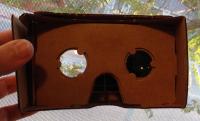Purpose of X3D - Architecture
Submitted by Leonard Daly on Thu, 10/20/2016 - 21:32This is the third in a series discussing the next generation of X3D. The current architecture of X3D does not support the industry standards in modeling, archival, and user experience. It uses a single primary file with additional external resources loaded as needed including other X3D files or media (images, audio, video, and scripts). The capabilities made available in the X3D files are either insufficient (e.g., lack of deformable skin animation) or in conflict with the major display environment (e.g., Scripts). This post describes a systems architecture with implications for content architecture that addresses these issues.


 For 20 years, the Web3D Consortium has developed and maintained a open, royalty free, ISO ratified and well documented standardized markup language for transmitting and displaying 3D content on the web called X3D.
For 20 years, the Web3D Consortium has developed and maintained a open, royalty free, ISO ratified and well documented standardized markup language for transmitting and displaying 3D content on the web called X3D.